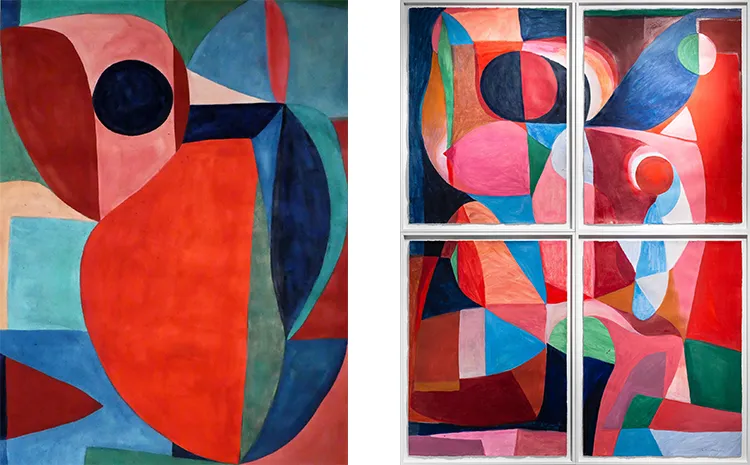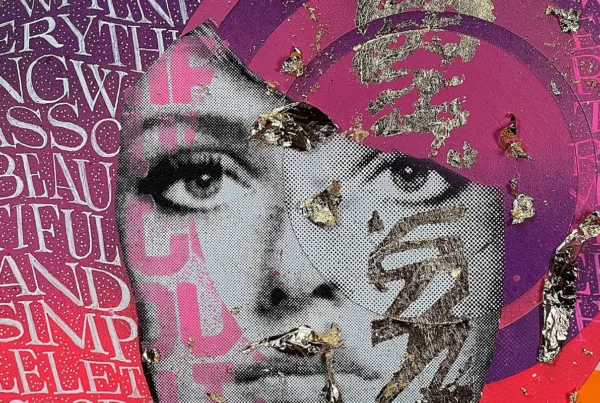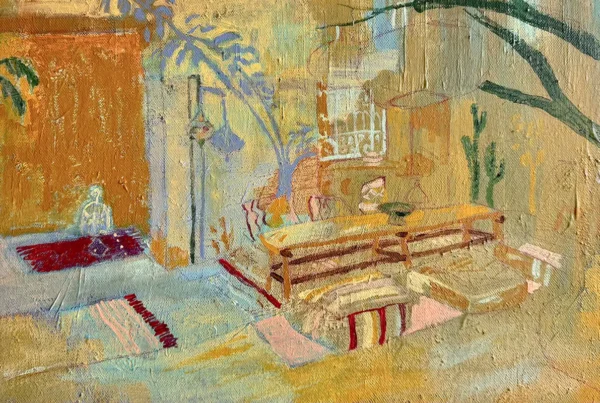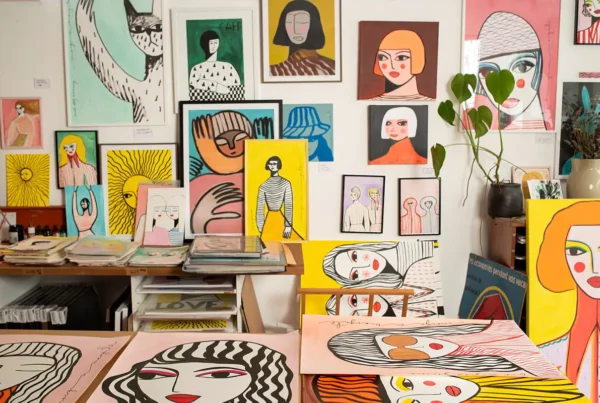Caroline Denervaud: Embodying Emotions Through Movement and Color
Caroline Denervaud is a Swiss artist based in Paris whose work bridges the worlds of dance, painting, and performance art. Born in Lausanne in 1978, Denervaud’s unique artistic style is characterized by the seamless fusion of movement and visual art. Drawing from her early love of dance, she creates paintings that are more than static compositions; they are traces of her own physical and emotional expressions. Denervaud views the process of creating art as an extension of her body’s movements, using large canvases and vivid colors to capture the essence of her immersive, improvisational dance. For her, art is an ongoing dialogue between emotion and form, a dialogue she invites the audience to explore with her.
Denervaud’s approach is deeply personal and intuitive. She describes her process as one without a predetermined outcome, stating that if she starts thinking about the final result, she stops working altogether. Her method often begins with an emotional connection to music, which she listens to until it envelops her fully, allowing her to release her emotions through movement. This physicality becomes the foundation of her art. Through the dynamic gestures she performs, Denervaud leaves marks on her chosen medium, often large sheets of paper or canvas placed on the floor. These raw traces are both the record of her body’s motions and the starting point for further elaboration with color and form.
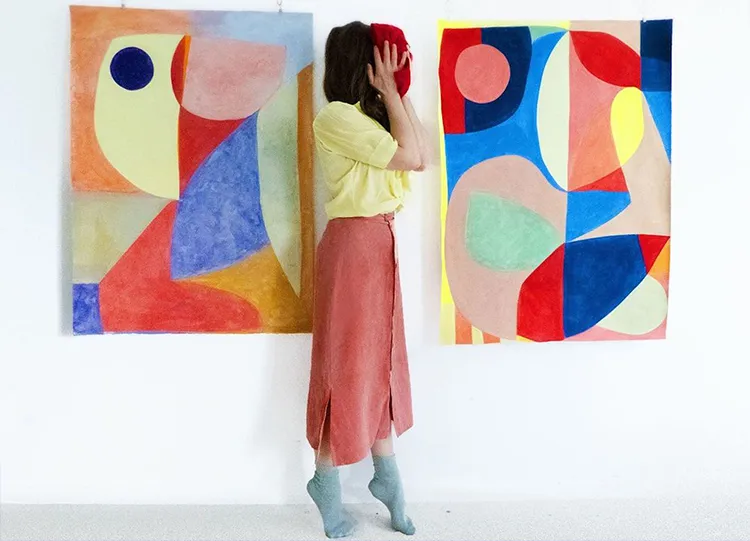
Caroline Denervaud: From Dance to Artistic Expression
Denervaud’s early ambition was to be a dancer, a passion that would deeply influence her work. However, after an injury forced her to abandon professional dance, she shifted her focus to visual art. She studied at the Laban Center in London before moving to Paris, where she furthered her education in painting and fashion design. Despite the transition, movement remained at the heart of her creative expression. She recounts how a friend suggested she film her movements, an idea that reconnected her with dance in a new way. By dancing on large sheets of paper, her body left visible marks, traces of the movements that defined the structure of her art. These traces, she explains, became the foundation of her practice, transforming dance into a tangible, visual form.
The performative aspect of her work also manifests in her collaborations, such as those with director Adrien Dantou. Together, they create live performances where movement and painting unfold simultaneously. In one such collaboration, Denervaud painted while Dantou danced on the canvas, the result being a fluid interaction between two art forms. Denervaud emphasizes that these performances are unscripted, relying on the mutual energy and presence of the performers. This spontaneity mirrors the way she works in the studio, where every movement is an expression of the moment, leaving marks that carry the weight of emotion and energy.
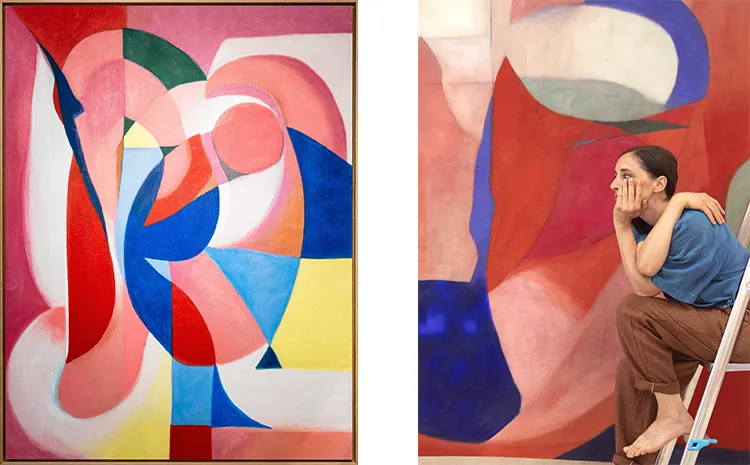
The Art of Traces: Movement Translated into Visual Form
Denervaud’s work is not just about movement for its own sake but about the emotional narratives that movement conveys. She believes that the body, when allowed to move freely, becomes the most honest vessel for expressing emotions. The traces left by her body on the canvas are imbued with the energy of the moment, capturing a fleeting experience in a permanent form. These marks are often the first step in her creative process, and she sees them as the architecture upon which she builds the rest of the piece. The act of painting then becomes a dance in itself, a choreography of emotions as she adds layers of color and form to the initial traces.
The use of color plays an integral role in Denervaud’s work, often following the creation of these initial marks. She has a deeply emotional connection to color, describing pink as the first shade she uses in her paintings because of its softness and warmth. Other colors, such as red, blue, and green, enter the composition to create contrast and depth. Denervaud’s use of color is never preplanned; instead, it arises instinctively from the emotional tone set by the traces of her movement. The interaction between color and form creates a dynamic visual experience that speaks to the energy of the original performance.
Denervaud’s paintings can be seen as abstract diaries, a continuous series that captures the rhythm and balance of her internal world. She likens her work to a journal that will only end with her death, a visual record of her life’s emotional and physical experiences. For her, each piece is both an end in itself and part of a larger, ongoing conversation with her own body and emotions.
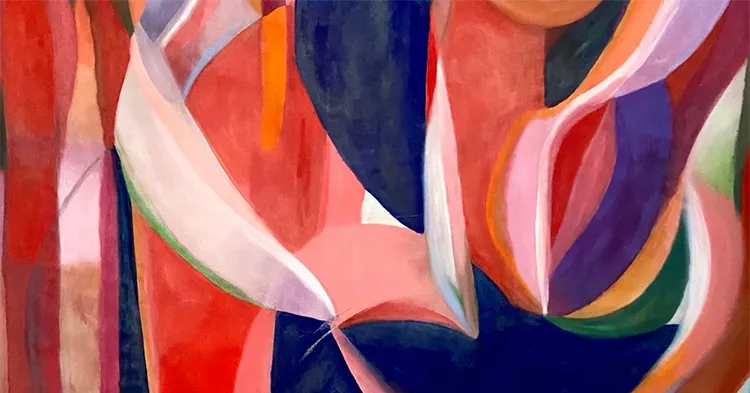
Caroline Denervaud: Collaborations and Expanding Artistic Horizons
Throughout her career, Denervaud has embraced collaboration, exploring new dimensions of her art by working with artists in different fields. One notable collaboration was with fashion designer Roksanda Ilincic, for whom she created a live installation during London Fashion Week. Her paintings were suspended in space, creating an immersive environment through which models walked, blending the worlds of fashion and fine art. This project exemplified her belief that there are no borders between the arts, and she welcomes opportunities to integrate her work into unexpected contexts.
Another significant partnership has been with filmmaker Adrien Dantou. Their collaborative performances are rooted in improvisation, with Denervaud painting as Dantou moves. She describes these experiences as fluid and respectful, with the energy of the audience and the performers feeding into the creation of the art. These collaborations extend Denervaud’s work beyond the studio, allowing her to explore how her art can interact with other forms of expression.
As she continues to expand her practice, Denervaud remains committed to the idea of art as an ongoing, evolving process. She is currently exploring video as a medium, creating works that capture not just the traces of her movement but the movement itself. Whether through painting, performance, or film, Denervaud’s art remains a powerful exploration of the connections between emotion, body, and visual form.
